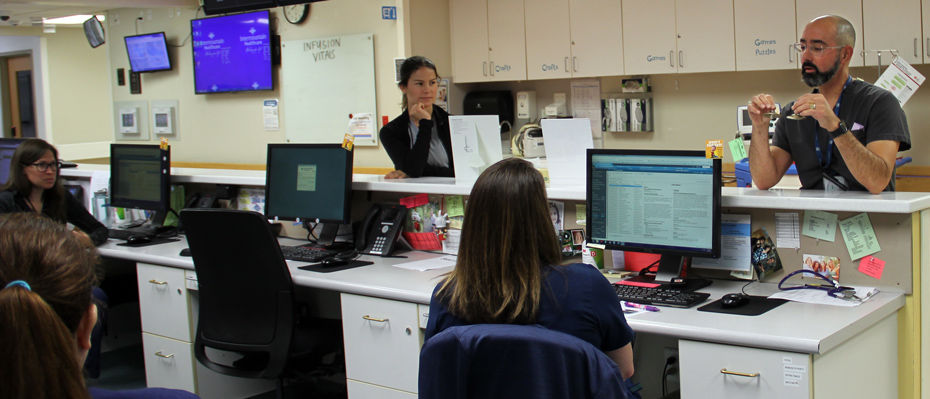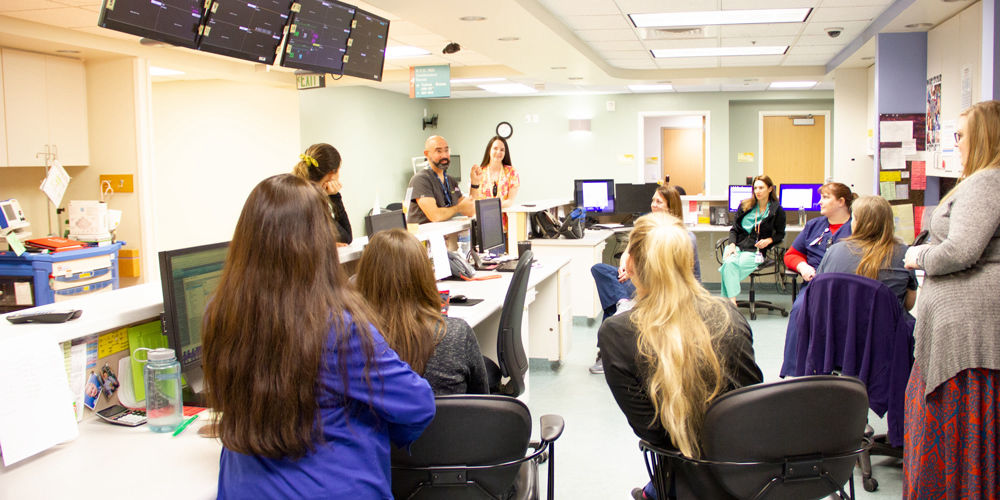was 2015 when I realized something had to change. During the previous decade, I’d thrown myself into my clinical and administrative practice, gradually losing the connection to medicine that I’d developed while working for the Indian Health Service in the early aughts. The stark economic realities of our health care industrial complex, the siloed approach to care, a laser focus on often competing goals (efficiency, reimbursement, quality, cost-control, patient satisfaction)—these all left me feeling like a detached spectator in my own unfolding professional drama.
It was then that I stumbled upon a presentation about the power of mindfulness for helping physicians rediscover why they chose a career in healing. That presentation, led by Marc Potter, LCSW at Intermountain EAP—and my collaborator in the Mindfulness in Medicine Program at Primary Children’s Hospital—started me on a transformational journey that has reaffirmed my commitment to medicine and the families seeking relief from suffering. Like someone being handed new lenses after adapting to a weakening eyeglass prescription, a clarity of purpose has taken hold. I now have a deeper presence at work and more meaningful human connections with my patients and colleagues.
Mindfulness is evidence-based—and the evidence is growing
There is a growing body of literature demonstrating that a mindfulness (meditation, yoga, journaling, artistic expression, to name a few) fosters moment-to-moment awareness, reduces volatility, and allows for the psychological space to respond to those around us with heightened compassion and a “soft touch.” Cultivating the mind in this way has helped me to approach stress and conflict with an openness and curiosity that enables me to be less reactive, more insightful, and a better listener.
Though the personal benefits of mindfulness have been measurable and life-changing, translating this systemically is challenging. It requires creativity, honesty, openness, kindness, and, above all, a willingness to be vulnerable.
Four steps we take to implement mindfulness in the Observation Unit
As a pediatrician in the Primary Children’s Hospital emergency department and rapid treatment unit (our 20-bed observation unit), I see firsthand the negative effect of chronic stress in emergent, high-intensity settings on colleagues, friends, and patients. Cultivating our natural craving for human connection and meaning in our personal and professional lives is an effective antidote to this stress.
For nearly a year now, we’ve begun the morning safety huddle with a “moment” of centering, team-building, and wellness. The “moment” lasts no more than 5 minutes, and allows the entire team to be present in solidarity and equanimity.

The mindfulness exercise unfolds as four predictable steps that you can use in your own safety huddle:
1. Ringing the mindfulness bells – The charge nurse calls the LIPs, RNs, techs, case manager and child life specialist to the safety huddle at the nursing station and I ring a pair of mindfulness bells. The soothing chime slowly dissipates into a tranquil silence and the group breathes quietly together.
2. Scripted moment – I follow the ringing of the mindfulness bell with a few spoken words, such as:
- The Day’s Intention
- Sharing Gratitude
- Storytelling
- Poetry
3. Group sharing – Following the scripted moment, I invite others to add their perspectives, which often inspires a moment of sharing and deep listening.
4. Safety huddle – The charge nurse then begins the formal safety huddle, after which the clinical shift begins.
I’ve learned a few lessons along the way
In the beginning, the chiming of the bells brought some eye rolling, consternation, and general confusion. Bringing it to the team has required persistence. With time, this initially awkward intervention has become a much-appreciated morning ritual.
The road to personal recovery, though slow, steady and effortful, has been a worthy crossing. No longer do I measure a shift in terms of corporate “productivity”, nor do I consider my performance admirable based on how fast we clear the waiting room.
Instead, I gain tremendous satisfaction by providing and acknowledging the compassionate service of my teammates, regardless of time, severity of illness, or the frenetic atmosphere we find ourselves in. The currency is connection, and the profits are priceless.
David Sandweiss
Psychological safety is crucial for the medical field to innovate and improve. Teams must feel safe and open to expressing concerns and reporting errors. Psychiatrists Jennifer O’Donohoe and Kristi Kleinschmit share tips to create a more psychologically safe environment for your team.
Frequent and meaningful communication is a hallmark of high-performing teams, and it matters even more during a crisis. The Resiliency Center’s Megan Call and Amy Locke share helpful resources and a list of prompts to connect your team.
The Resiliency Center's Jean Whitlock and Megan Call provide a step-by-step guide for infusing frequent and efficient storytelling into your workday.
